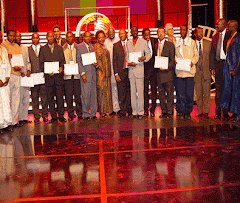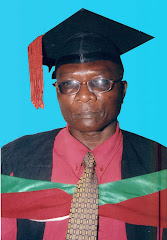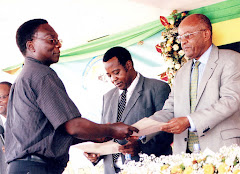The theme highlights the significance of cooperation and the importance of integrated approach to water resources management at both international and local levels. Equity and rights, cultural and ethical issues are essential to be addressed when dealing with limited water resources. Tanzania communities have complex priorities for the use of water for economic activities and for household use, but as well for maintaining health of the people in rural areas. Men and women often have different priorities and responsibilities as well as cultural conditions to determine indigenous practices and societal values that determines how people perceive and manage water sustainably. A colorful one week event allowed stakeholders within the sector inside and outside Tanzania to share experience on development and management of water and sanitation through exhibitions which were staged on the climaxed day in Bukoba town, Kagera region. According to the Ministry of Water and Irrigation in the country, the main objective of the ‘Maji Week’ is to create awareness and sensitize the public on water sector plans and reforms. The occasion highlighted the importance of their participation in environmental sanitation and water supply programs, evaluate the environments, identify problems and draw up strategies for implementation. Analysts from the Ministry of Water in the country however concurred that, in the past two decades, Tanzania experienced increase pressure on the available water resources which it has not managed to effectively addressed. Instead, the demand for water increased considerably due to increased population and socio-economic activities. According to the statistics made available by the Ministry of Water and Irrigation in the country, presently the demand in most sectors of the economy in most Tanzania’s urban and rural water supply coverage is about 73 and 53 percent targeted for domestic use respectively. This means that, 3 in 10 urban residents have difficulty in accessing clean and safe water, while 1 in 2 of their rural counterparts has a similar experience.

Despite of many aids and efforts contributed by donors towards the attainment of clean water facilities, still great number of African communities especially living in rural areas in most African countries are using unsafe water from the locally dug wells.
However, Tanzanian government is highly committed to realize its vision of improving water supply to reach at a level of 90 percent of the total country’s population if it would really want to achieve its National Development Vision for 2025, says an expert in water sector from the ministry headquarter. Senior officials have repeatedly said that without the availability of water for domestic and other uses, the country could not achieve t5he UN’s Millennium Development Goals (MDGs) as well as the National Strategy for Growth and Poverty Reduction (MKUKUTA). Tanzania’ water policy targets are to raise the proportion of rural population that has access to safe and clean water from 53 to 65 percent by June 2009 and for urban population in the same period from 73 to 890 percent. There are also pressure from the agricultural and energy sectors, where growth depends on increased supply of water for irrigation and hydro-electric power generation.
In urban centers, there are 19 authorities responsible for development supply schemes, where the strategies involve commercialization of water supply and sanitation services according to the reports by the ministry. Commercialization is seen as the next step forward in urban water supply. Sewerage services would continue to be provided as part of an overall sanitation strategy for the urban area. However, plans for rural and urban water supply and sewerage services are only achievable if secured water resources are available, protected and used sustainable, a factor that is now a matter of serious concern
Water is indispensable element for sustaining people’s lives, growth and mankind development. Water is a critical for sustainable development including environmental integrity and alleviation for poverty and hunger. Water supply for human well-being is recognized as fundamental human right and indispensable for human health. This recognition thus entitles everyone to sufficient, affordable, physically accessible safe and acceptable water for domestic, construction and production use. However, world today has experienced fast diminishing of this natural resource as demand of fresh water continue to rise in response to rapid population growth. In Tanzania like elsewhere in the world, the use of water caters for the increased urbanization and is also necessary for fast industrial and economic development. It also caters for increased agricultural demand for irrigation. As a result, according to UN estimates, one billion people in the world have no access to safe drinking water, and two billion people lack basic sanitation The UN facilities. The UN general assembly at its 58th session in December 2003 proclaimed the year 2005-2015 as international decade for Action Water for Life. In order to ensure an effective implementation of this concept, Tanzania needs over US$ 1 billion in investment. Water is fundamental natural resource for socio economic development since the millennium summit’s declaration of the Millennium Development Goals (MDGs) in 2000 as an agenda of reducing poverty and improving lives of people in the world.

Water is becoming an enormous problem in African communities and most African governments seems to have not taken serious steps on the issue so as to ward off the phenomenon. Wherever there is little water flowing on water taps, consumers have to arrange their pails in single line as you can see in the photo. But for how long will this situation end to relieve consumers of the great burden they face?
Tanzania has been spearheading various strategic actions for achieving the MDGs targets. Efforts to achieve targets are done through initiatives that are mainstreamed in the country strategies and specific sector strategies and programs. Water sector responsibilities in Tanzania towards achieving MDGs hinges in the 17th millennium development goal which is to ensure environmental sustainability has started to bring hope. In Tanzania, Drilling and Dam Construction Agency (DDCA) is an active player towards improving water supply services in the country. Its role as a government agency is to develop sustainable and safe water sources through efficient means and at cost effective price. This objective is in line with the national objective of alleviating poverty and improving the health of people through provision of clean, safe and adequate water supply to rural and urban population. DDCA’s vision is to be the leading and most efficient organization in the country in the business of water well drilling and construction of water storage dams, by providing sustainable water sources and ensuring that clients get value for money from services provided. About 4,000 deep boreholes have been drilled by it since its launch in 1999. This achievement signifies that DDCA serves large number of people and livestock, industrial works, and various construction industries in the country. Water is a primary input in human life playing a pivotal role in poverty alleviation through enhancing food security, domestic hygienic security, hydropower, industrial development, mining, navigation and the environment for sustenance of eco-systems. The availability of water supply with good quality reduces time spent mainly by women and children in searching and fetching the precious liquid. It also increases health standards and ensures a favourable environment for increased children’s school attendance. During Maji Week, the occasion is also used to take stock of achievements so far made over the past year, problems encountered and lay strategies to solve problems in the delivery of water supply and sanitation services and in the management of water resources. While water is of such social, economic and environmental value, over the two past years, Tanzania like other African countries located south of Sahara desert, has been experiencing drought which has resulted into serious water shortages impacting on the very critical aspects of its people’s lives, growth and development. Water is becoming increasingly scarce all over the world, and this scarcity is considered one of the most pressing problems confronting the survival of humankind in the 21st century. The increasing water scarcity worldwide is posing threats on development and environmental protection. Scarcity and misuse of fresh water pose a serious threat to sustainable development and protection of the environment. This exemplified the central importance that water resources and water scarcity have attained in global debates on the environment and development. It’s widely said that, water scarcity have a profound impact on food security, human health and social and economic development. It is also argued that, there is an imperative for water to be seen as an economic good or scarce resource to be used optimally and judiciously. Water scarcity and poverty is a global perspective, the growing trend and the competition for water, however stands as a major threat to future advances in poverty alleviation. Under a serious scarce water resource situation, the available water not sufficient for the production of food and for alleviating hunger and poverty in the affected regions. An increasing number of rural poor in Africa are in future coming to see entitlement and access to water for food production and for domestic purposes as a move critical problem than access to primary health care education. The lack of water does not allow industrial, urban and tourism development to proceed without restrictions on water uses and allocation policies for other user sectors particularly agriculture. It’s therefore very important to recognize that water scarcity and poverty are much linked and that with the increased level of poverty in the communities, the environment becomes more susceptible to threats. Another dimension of thought is the fact that poverty associated with water scarcity generate migratory fluxes of populations within countries or to other countries where people hope to have a better life, but where they may not be well received.
















